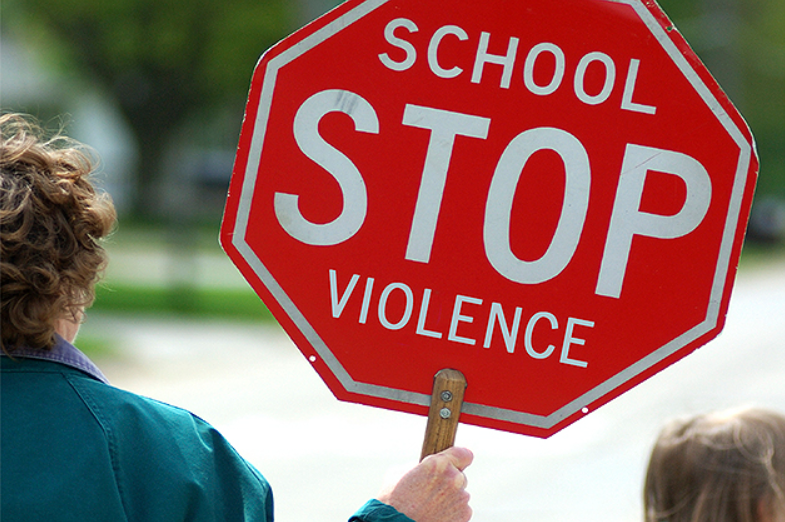Have you ever been disturbed by why school violence has always been part of what always happens? The terror is to the existence of students’ life loss and vandalism. However, you can put this major crisis to an end. This article has guidelines to help you reinforce positive behavior and reduce aggression among kids. Read on for inspiration on what school staff, parents, and children can do for their good.
Understanding the Root Causes of School Violence
Understanding the root cause of a problem is the wise way to solve the problem. School violence results from a starting point that must always be cut short.
1. Bullying
Physical or emotional bullying can lead to feelings of isolation, stress, and anger. In some cases, this can lead to violent behavior. Bullies pick on children who look weak and are always alone. However, introverts and polite kids face most emotional bullying.
2. Mental health issues
Students who struggle with mental health issues such as depression, anxiety, or trauma may be more likely to engage in violent behavior. This issue affects most students influenced by their backgrounds.
3. Access to weapons
Students with easy access to guns or other weapons may be more likely to use them violently. Some parents have firearms and store them not far away from their kids.
4. Lack of resources
Schools that lack resources such as counselors, mental health professionals, and security measures may be more vulnerable to violence. In effect, for justice, students might engage in unhealthy strikes.
5. Social and cultural factors
Social and cultural factors such as poverty, social inequality, and exposure to violence in media and entertainment can contribute to violent behavior. With the little knowledge these kids have, a little transformation won’t keep them away from engaging in violence.
6. Family dynamics
Students from homes with a history of violence or who experience domestic violence may be more prone to violent behavior. Backgrounds carrying these vivid flashbacks of violence will make them not see it as a big deal.
Proactive Measures to Prevent Violence in Schools
Despite all violence in schools, some strategies can be employed to prevent students from engaging in violence.
Creating a positive school culture
A positive school culture embodies the school’s attitude or feelings. Also, it defines its personality. School cultures resemble perceptions, shared values, and belief patterns. You are guaranteed sustainable expectations that support social, emotional, and physical support.
Early intervention and prevention programs
As the saying goes, ‘prevention is better than cure,’ you can apply early interventions and prevention programs. The interventions can be targeted at individuals or the school community. It includes counseling, educational curriculum, and anger management issues.
Improving access to mental health services
This connection is critical in helping students needing more intensive services or requiring attention. This kind of student clearly defines the potential of violence. Improving access to mental health services is critical in preventing and responding to violence and school crises.
Training for staff and students
The disagreements between staff and students are yet to be solved. You can organize events and meetings just for them. Make them exchange ideas about how and why they need what they think is the right way to make things happen.
Security measures
Here, security cameras will define a perfect illustration of order. Students will only mess in the presence of a camera that will give evidence against them If it is inconvenient, you can provide an advantageous watchman connection over them.

The Role of Teachers and Parents in Curbing School Violence
Reducing violence begins at home and then at school. However, both the teachers and parents play an essential role in curbing this issue once and for all.
1. Promoting a culture of safety and respect.
You should create norms and convictions that will carry safety and respect at home and school. These students are immature, and the adults are the only trusted sources to command respect in them.
2. Early intervention and support
If children hear about violence in the news, allow them to talk about how it makes them feel. Take time to listen to their fear, sadness, or confusion. Reassure them that you will help keep them safe.
3. Communication and Collaboration
Talk to your children and acknowledge their feelings. When parents listen, children are less likely to resort to aggressive behavior. Developing a parent-on-campus policy that makes it convenient and comfortable for parents to visit the school will create collaboration.
4. Education and Awareness
With many rules and regulations all over. You can teach the kids to comprehend the rules for effective behavior. They will be bound to do what is right to avoid the consequences of breaking the rules. As a parent, set limits, such as “No hitting or name-calling.”
5. Monitoring and reporting
If you notice warning signs, talk to your children about any problems they may be having. Consider getting professional help for them. Talk to their teachers or school administrators. Early warning signs enable parents and schools to address a child’s needs before problems escalate.
6. Develop a comprehensive anti-bullying policy
Tell children to report any incidents of bullying or violence. Bullying is a common form of school violence. When confronted by bullies, teach children to maintain control and be assertive, not aggressive. Role-play with children to help them practice these non-violent approaches.
7. Educate students, staff, and parents
The school can set up a meeting for all students, staff, and parents. Here you can share norms as you articulate the relevance of peace and avoiding violence. You can take the chance for entertainment as you foster interaction. Research shows that the more people connect to share things in common, the more they take responsibility for each other.
8. Establish a reporting system
School administrators can establish a reporting center to find quick solutions for bullies. A realistic approach is to have disciplinary committees. Once the reports are made, a quick action that is profound should take charge for justice and also a point for learning the hard way for others of the same character.
9. Provide support for victims
You can support both victims being humiliated, the bullies, or even the fraternity facing violence. You can create workshops to teach them on effects of violence. If it is the fraternity, you can support them by buying what was vandalized.
10. Enforce consequences
With perception, you can create a clearly defined outcome as penalties or punishments for those who violate the patterns placed. For instance, vandalism victims should be made to pay back damaged resources.
Conclusion
You should make home heavens here on earth for your kids. This can only be achieved by your attention to ways to minimize or avoid cases of violence by all means.
Gifts can also administer peace and cohesion. If you physically hurt your opponent, a custom soccer number necklace with a name is a soccer lover gift. You can engrave a player’s name and number with a sporty touch.
Also, a personalized kids’ room positive art is a perfect gift to limit violence. You can minimize the fear influence to violence by affirmations and encouragement in this art.



